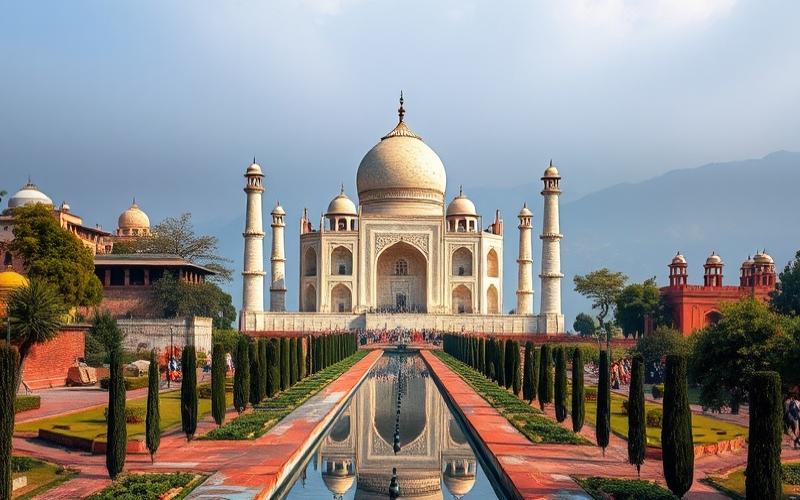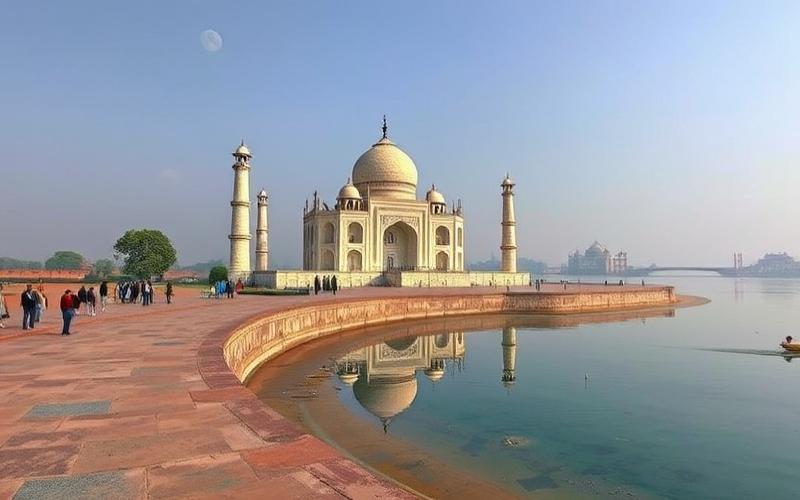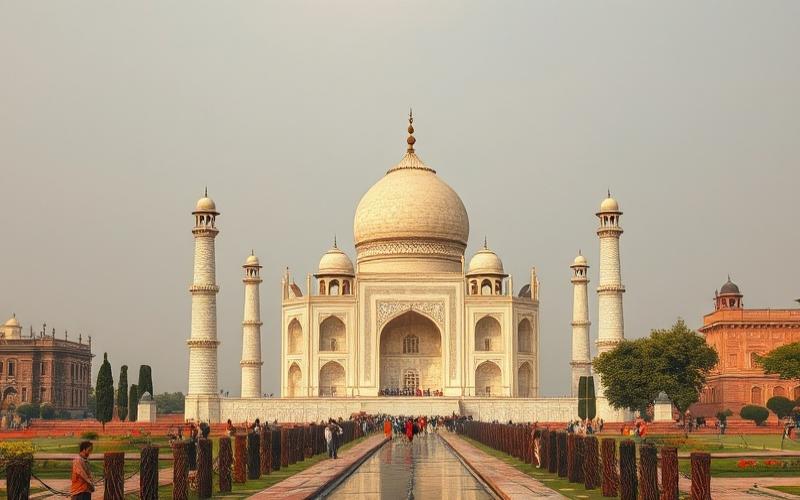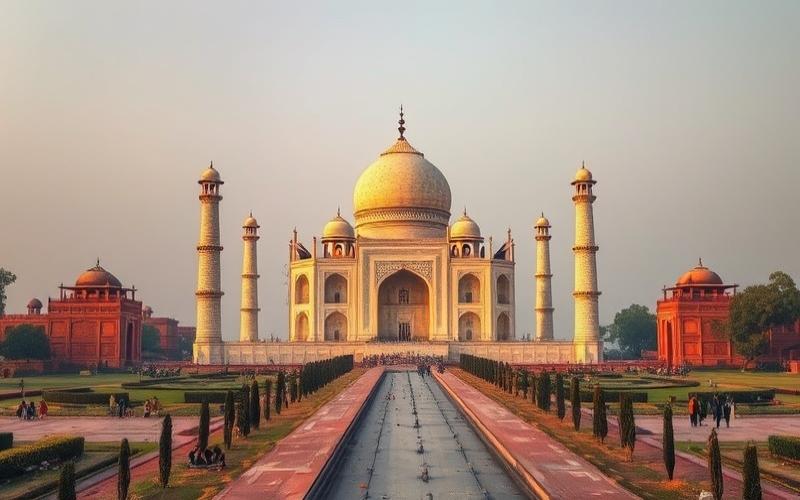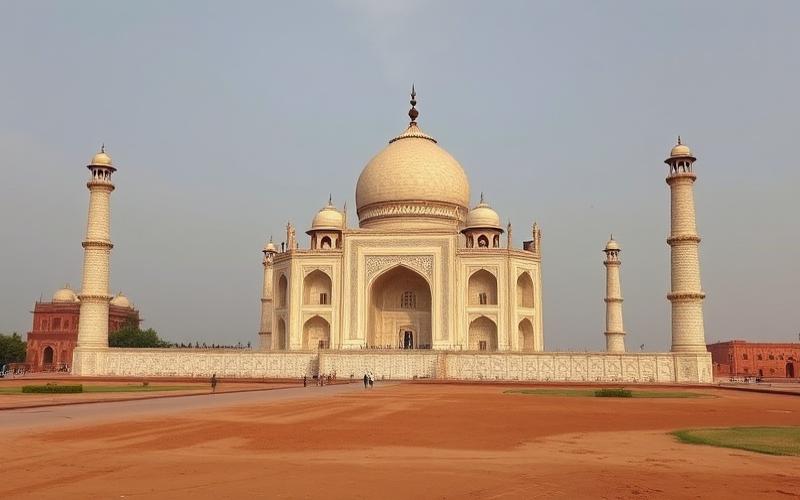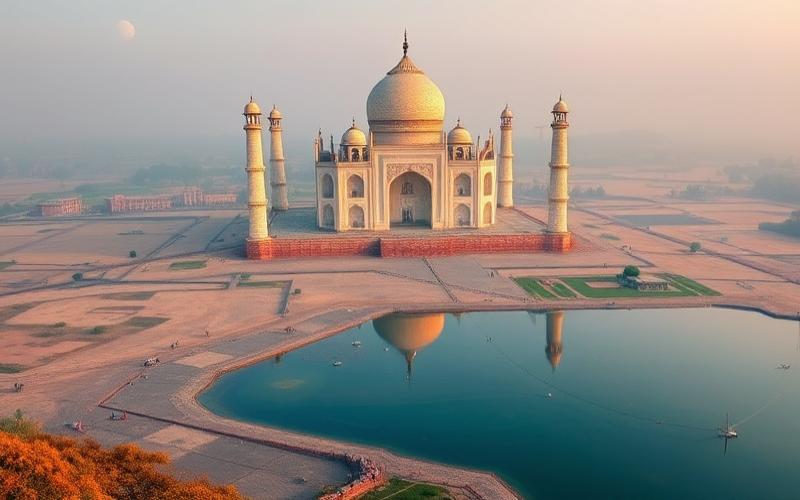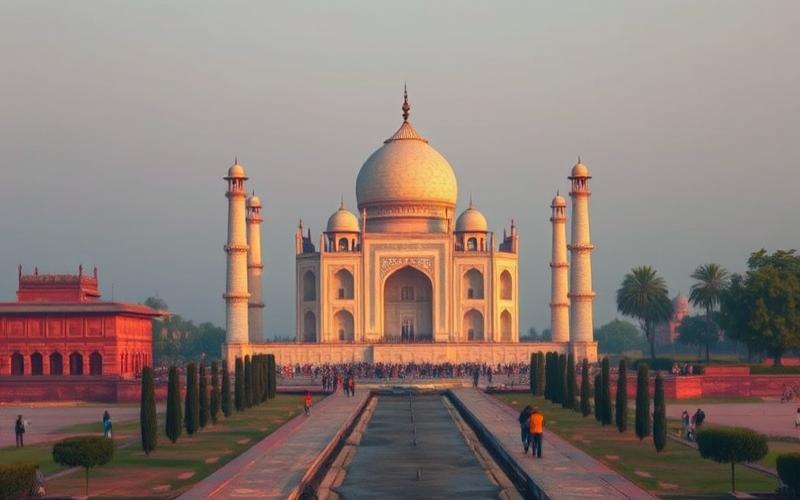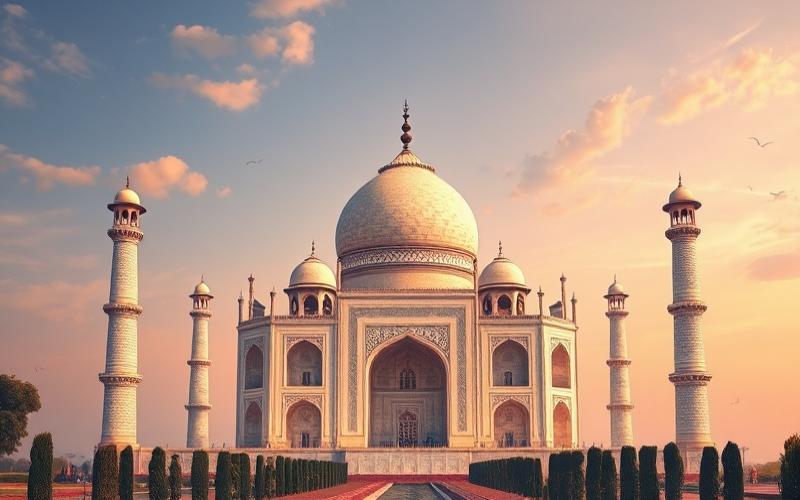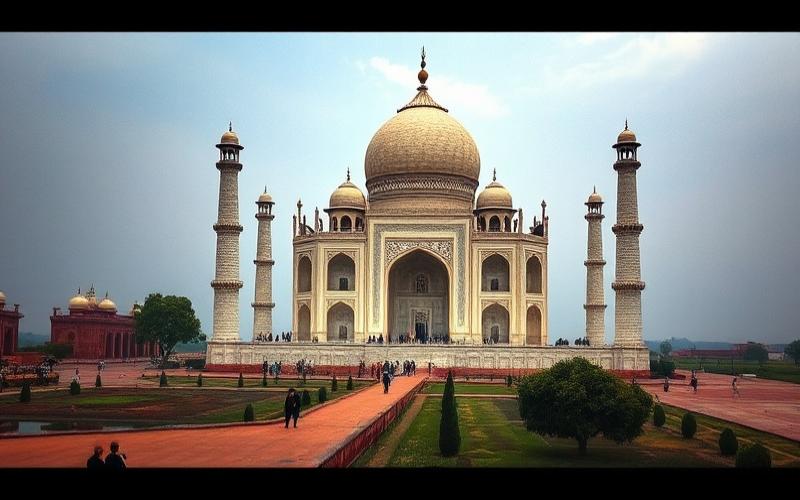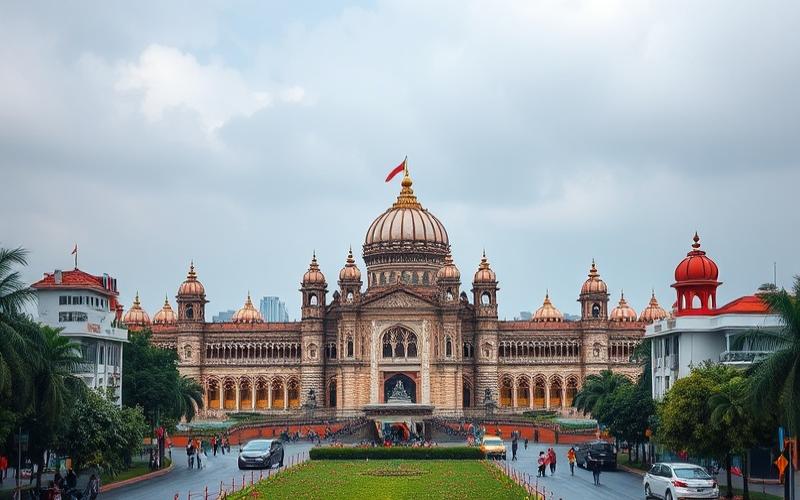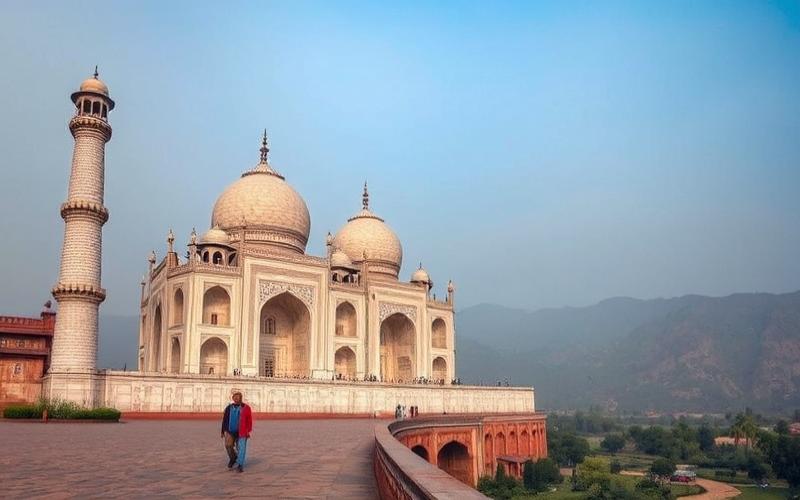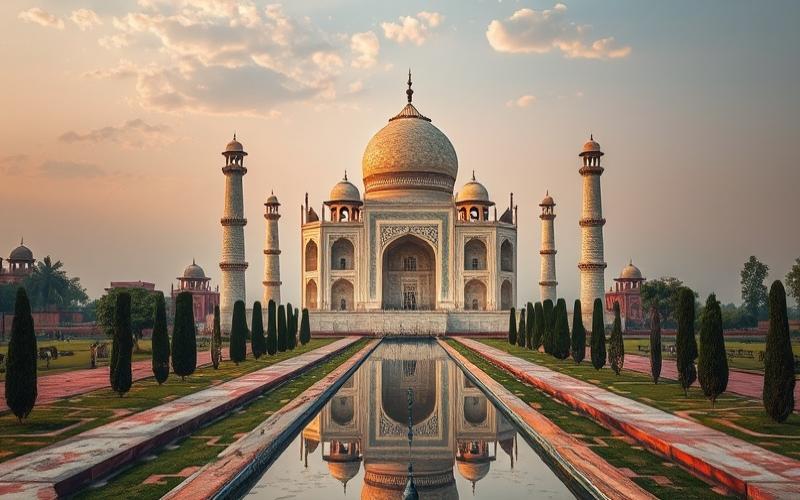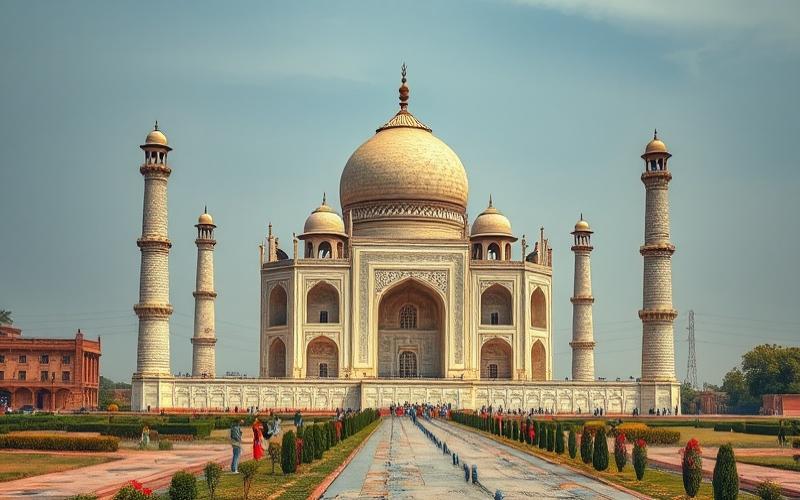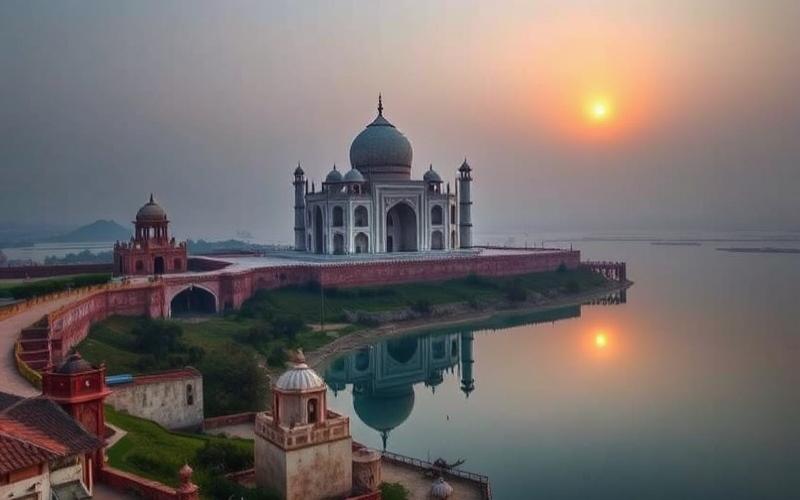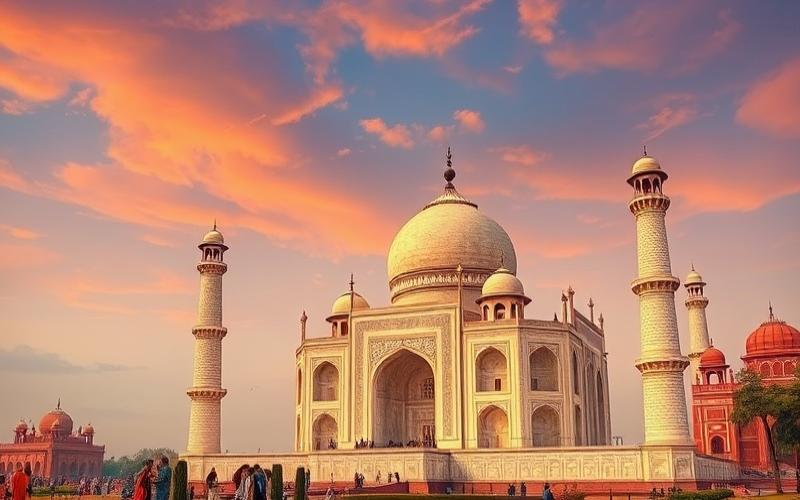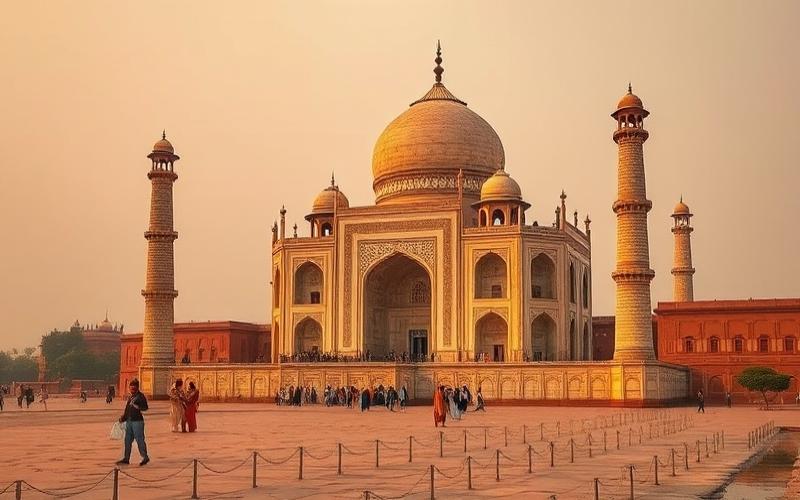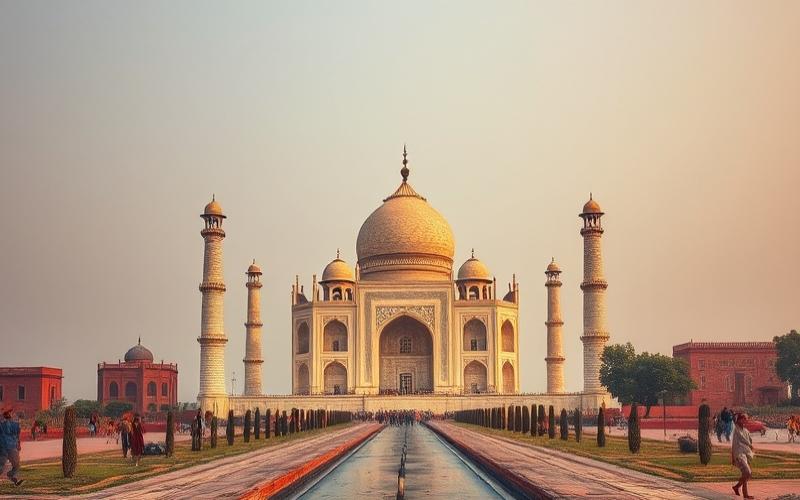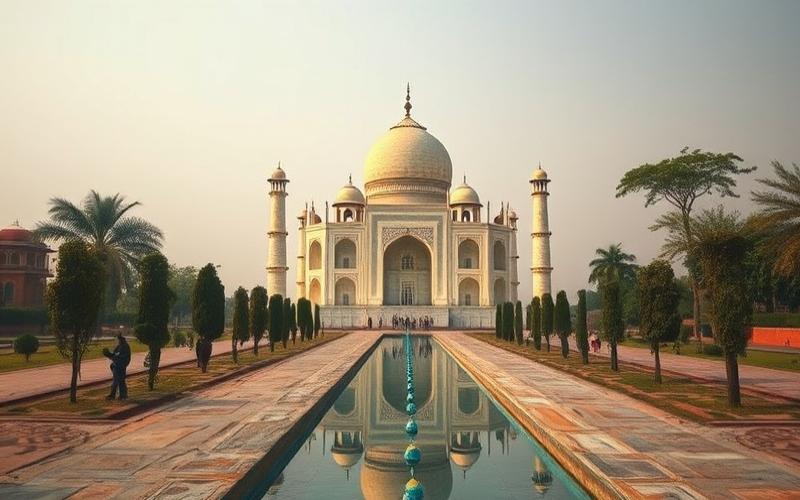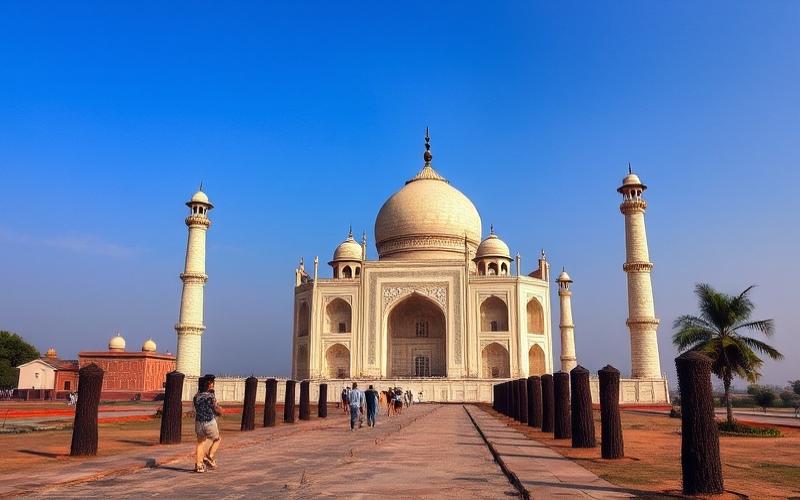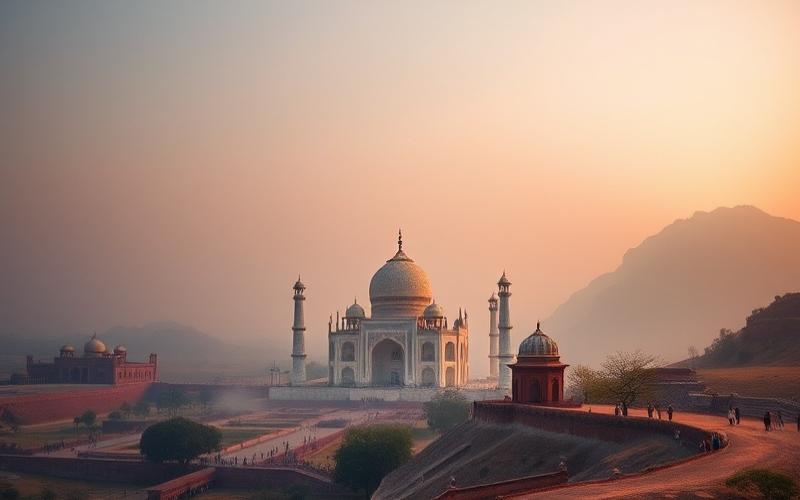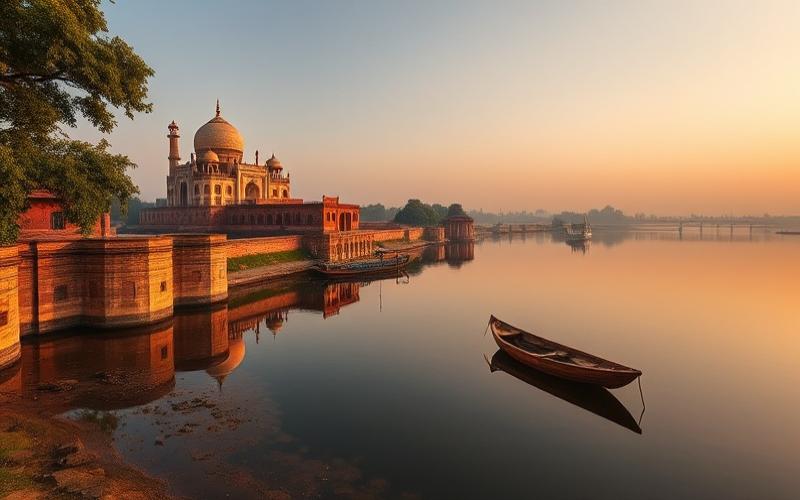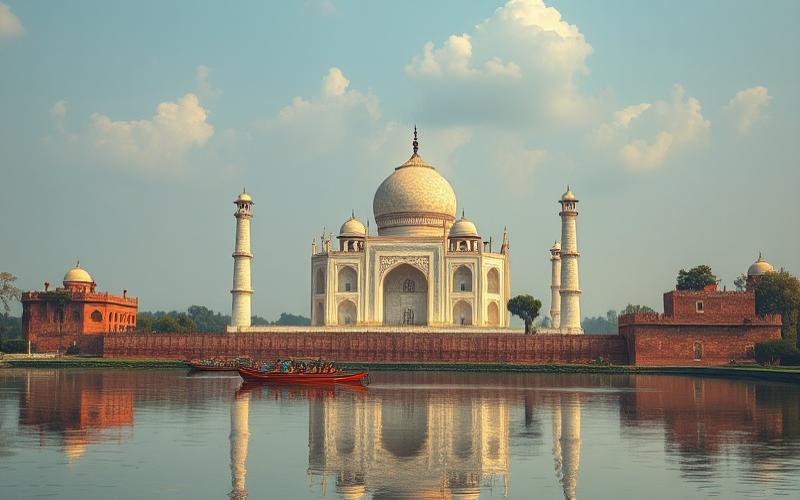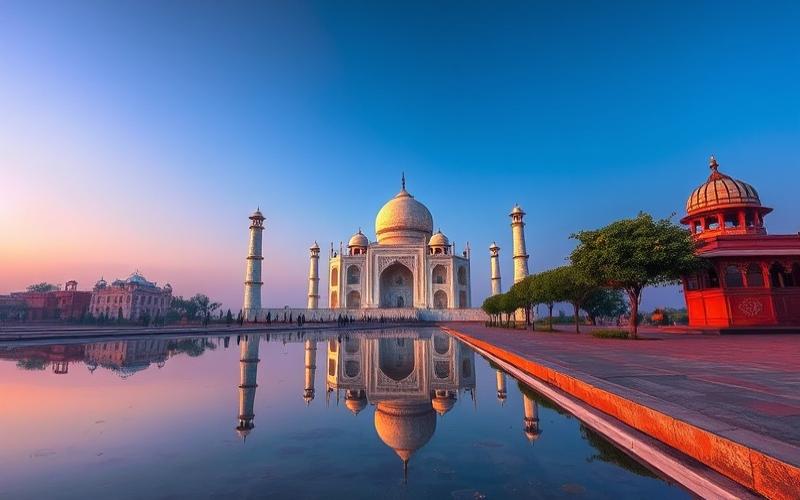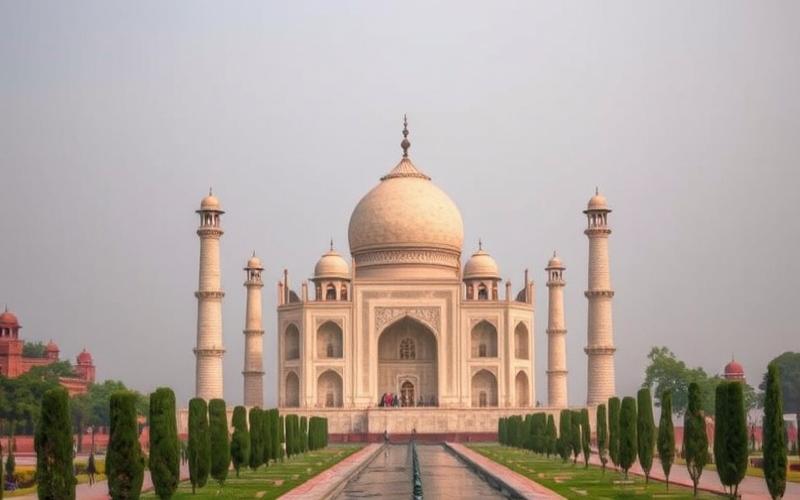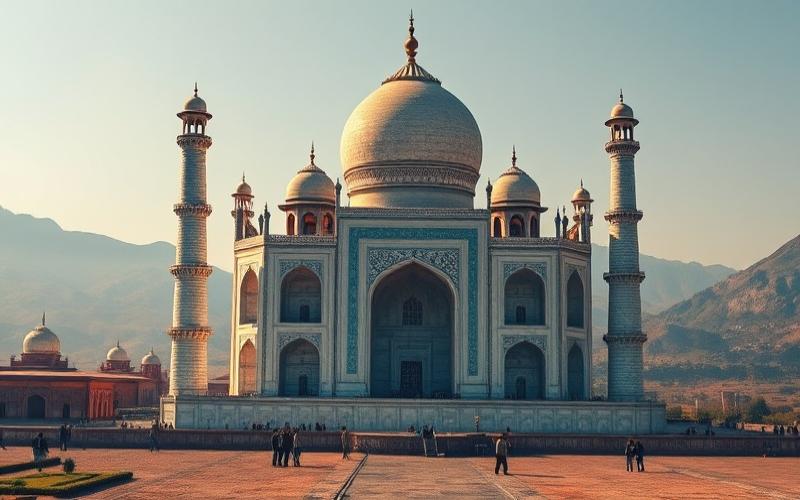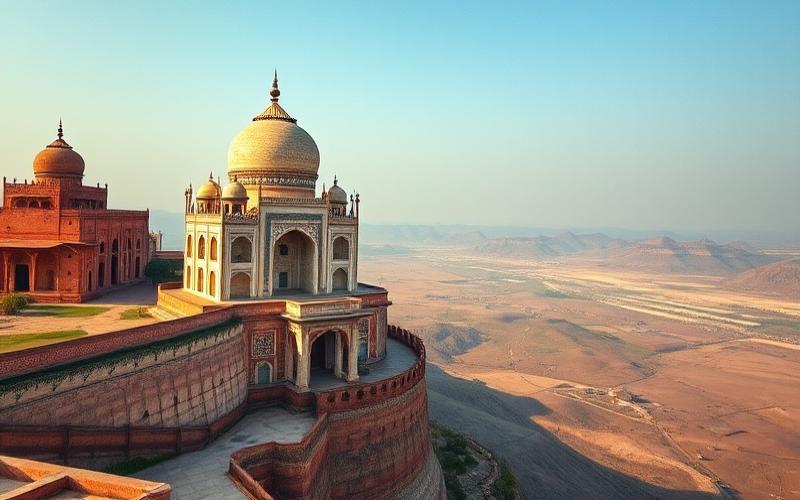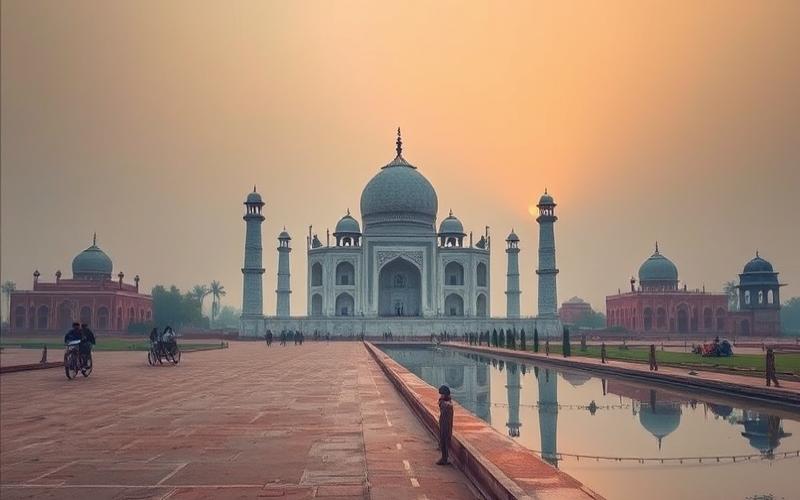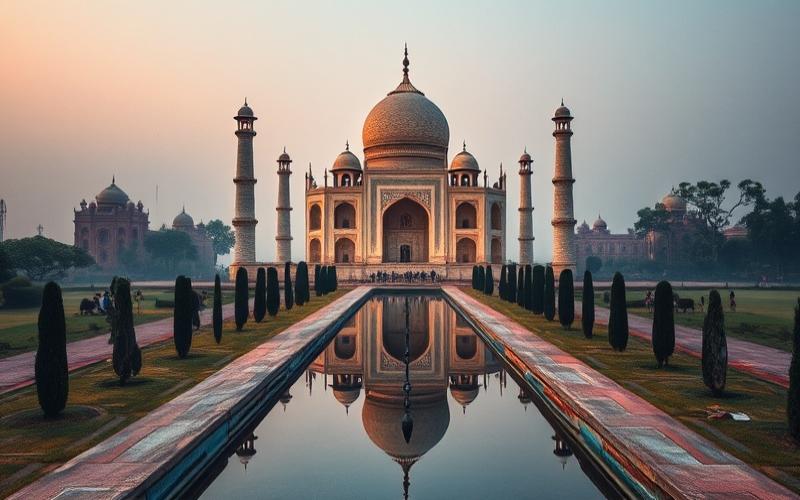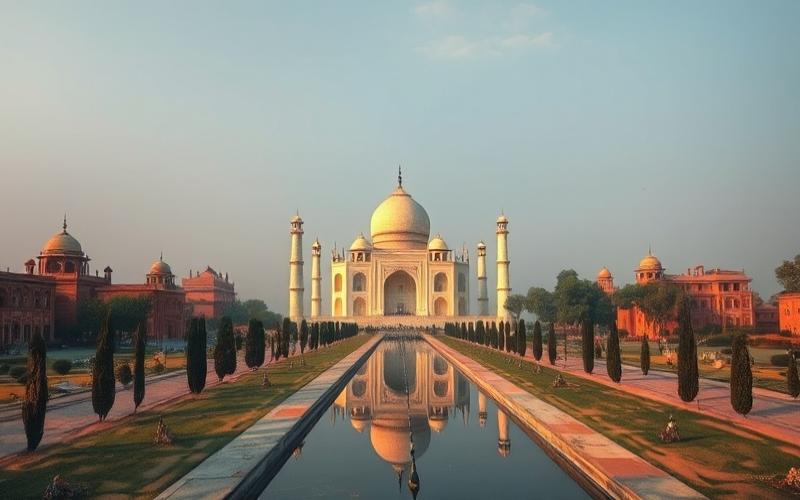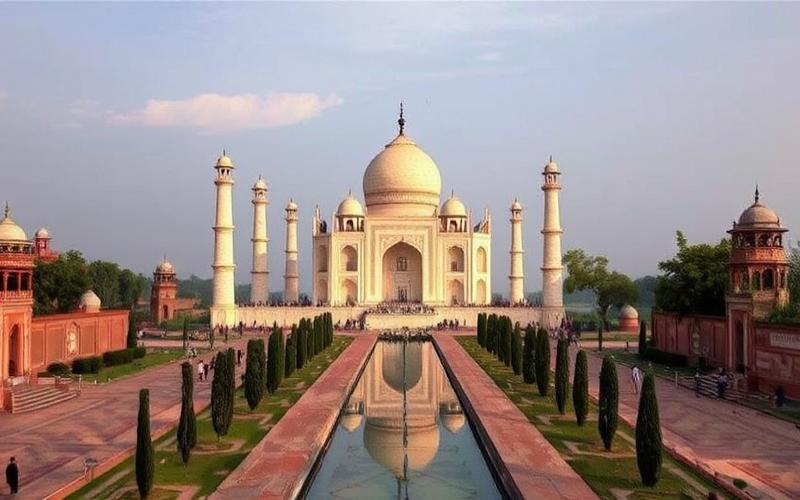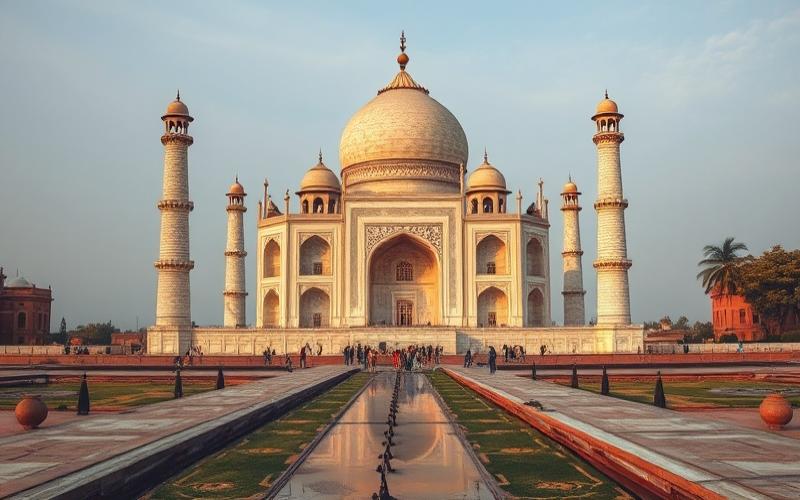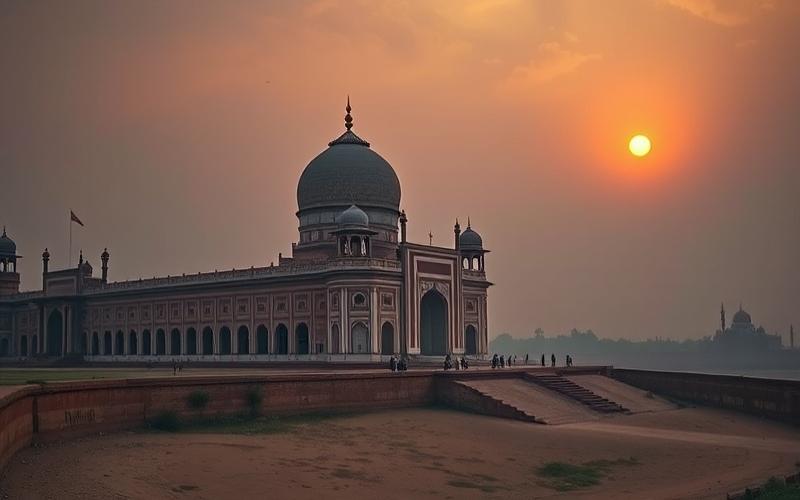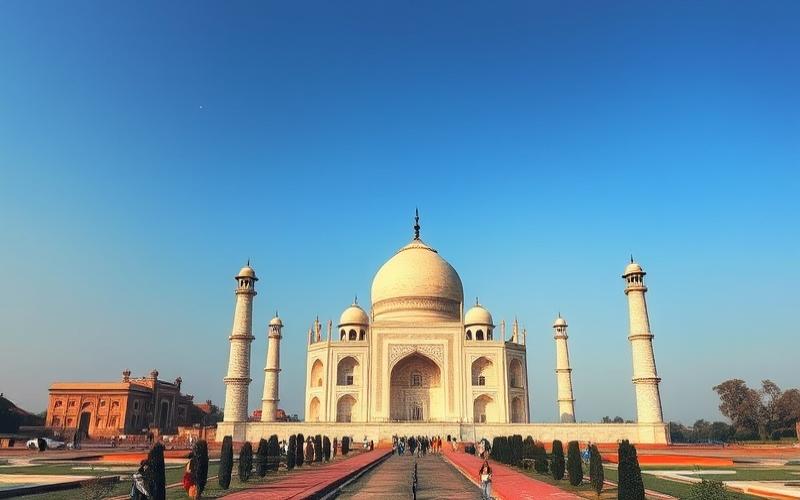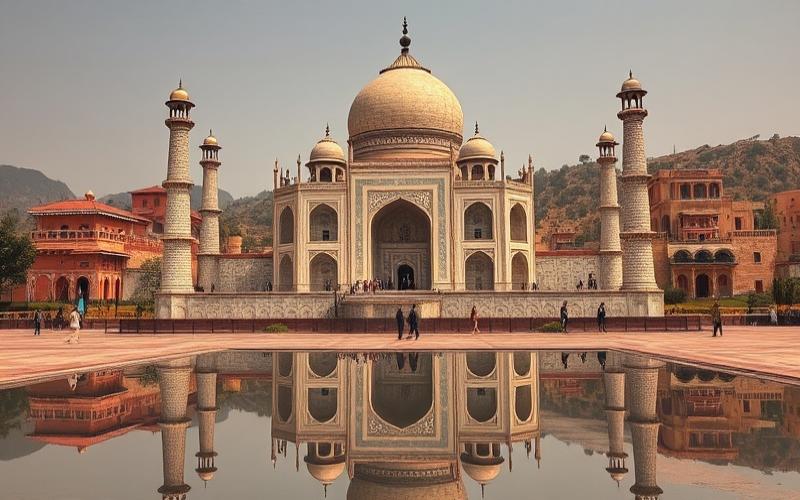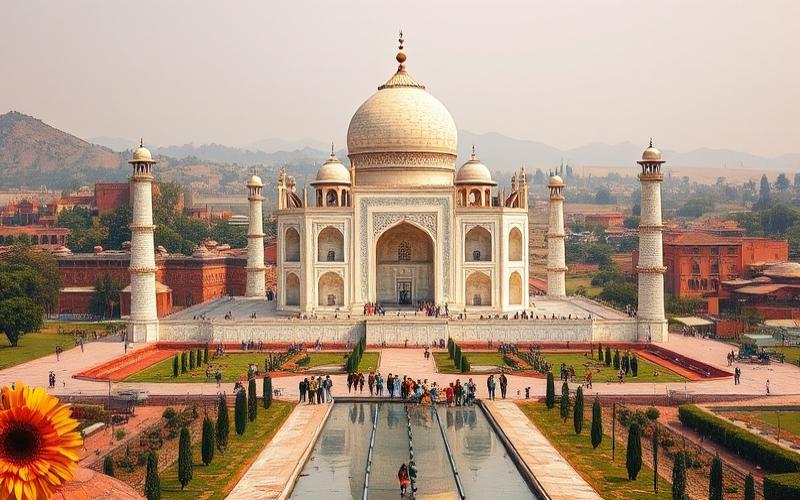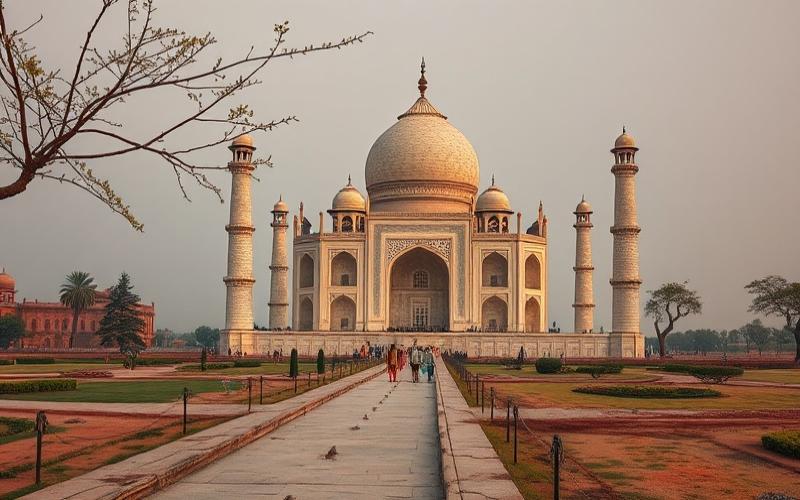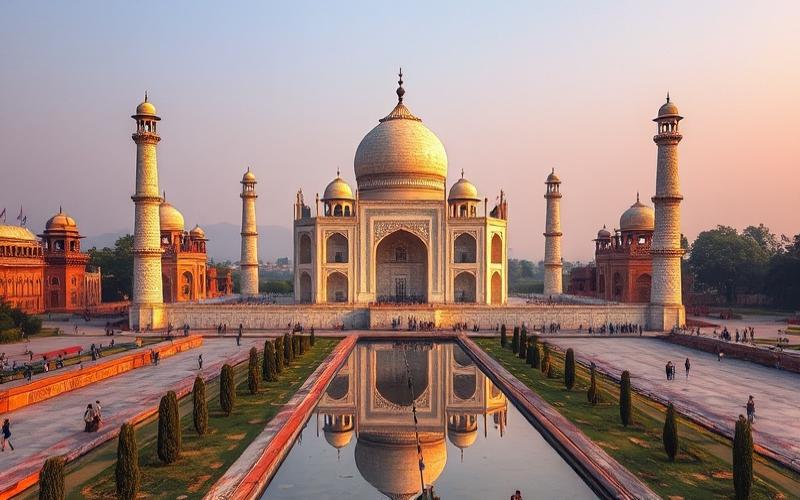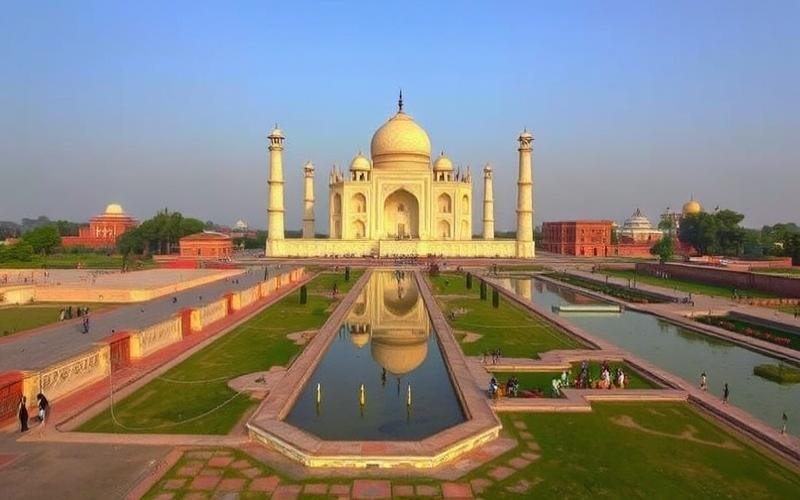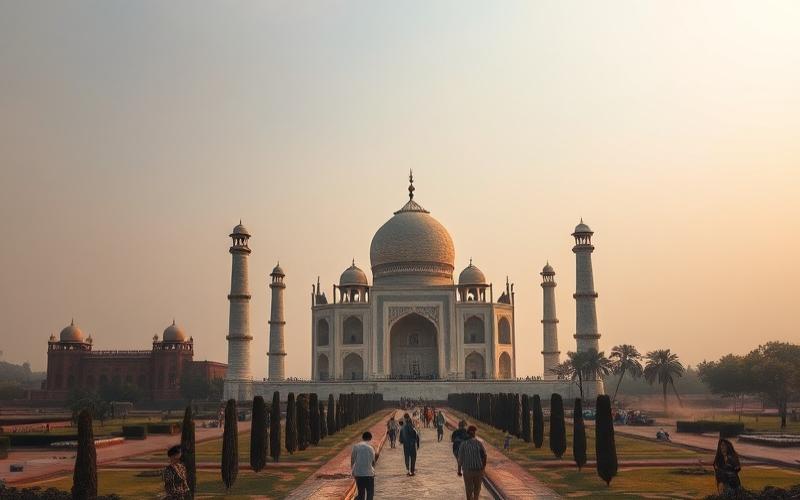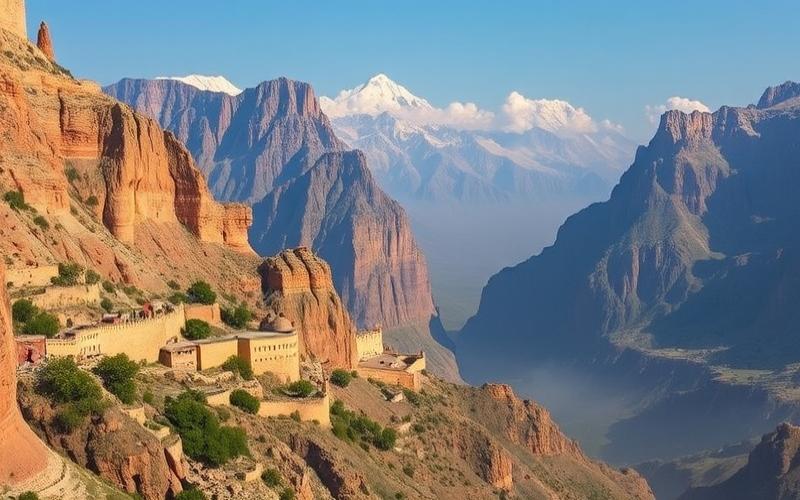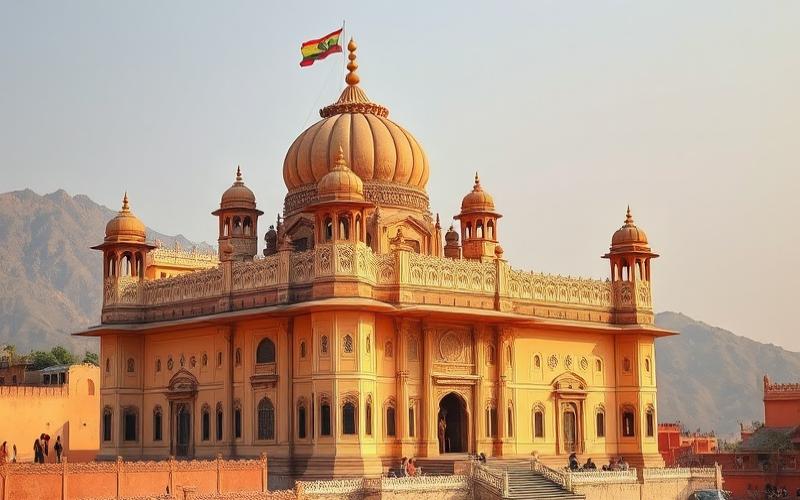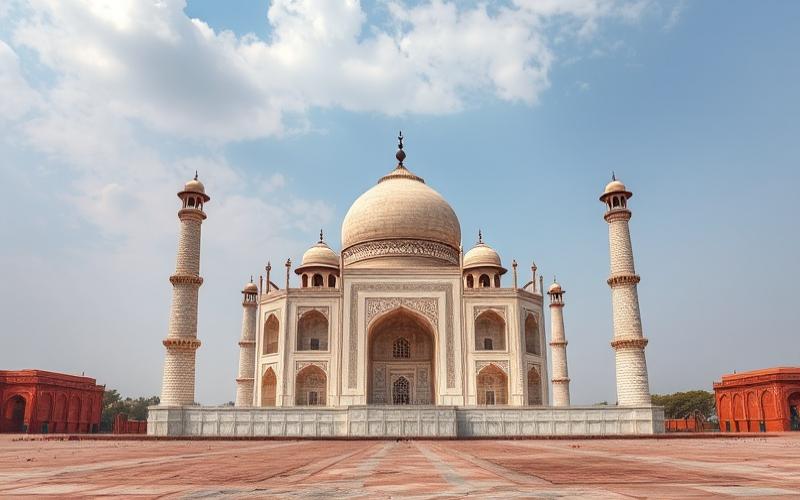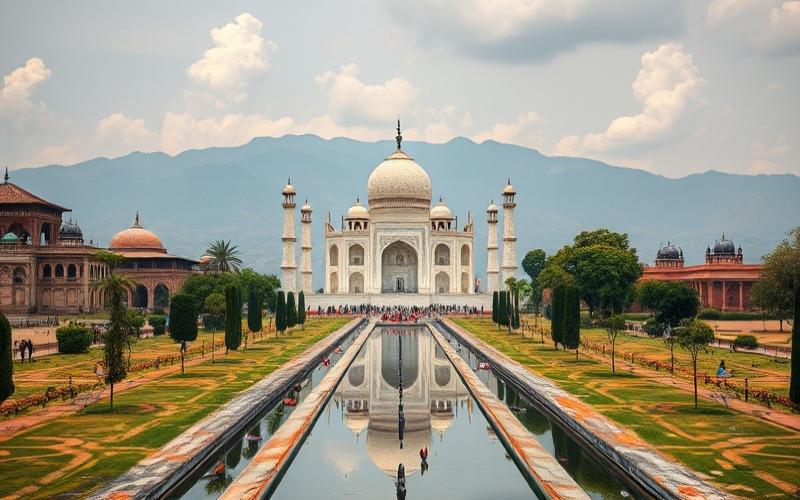
 Published on and written by Cyril Jarnias
Published on and written by Cyril Jarnias
Navigating India’s vast public transportation network can be both fascinating and bewildering. With its iconic trains connecting nearly every corner of the country, colorful buses winding through bustling streets, and the unique blend of motorized rickshaws crisscrossing roads, this practical guide aims to immerse you in the nation’s vibrant energy while providing essential tips for efficient travel.
Whether you’re an intrepid traveler seeking authenticity or a curious explorer wanting to understand the cultural mosaic this country offers, this overview of Indian public transport promises to transform every journey into an unforgettable and enriching adventure.
Discovering Transportation Modes in India
India offers a mosaic of public transportation options suitable for all budgets and distances. Traveling in India means experiencing its transport systems, often vibrant and rich with encounters.
| Transport Mode | Areas Served | Features | Approximate Price | Practical Tips |
|---|---|---|---|---|
| Indian Railways | National (cities, regions) | World’s largest network, various classes, reservation often required | From ₹50 for short trips | Book early (online or at station), check class (Sleeper, AC, etc.), allow time buffers |
| Local Trains | Major cities (e.g., Mumbai) | Very crowded during rush hours, women-only coaches | From ₹10 | Avoid peak hours, watch for crowds, secure belongings |
| Public Buses | Urban, intercity, rural | State-managed, very economical, variable punctuality | ₹2–10 in cities | Buy ticket onboard or at station, check schedules by region |
| Private Buses | Major routes, long distances | More comfortable, sometimes air-conditioned, sleeper buses on night routes | Higher than public buses | Tickets via agencies or online, better reliability |
| Metro | Delhi, Mumbai, Bangalore, Chennai, Hyderabad, Kochi | Modern, air-conditioned, fast, high security | ₹100–500 by distance | Buy rechargeable card or token, ideal for avoiding traffic |
| Autorickshaw | Everywhere, especially cities | Frequent price negotiation, typical and practical | ₹30–200 per ride | Always negotiate or request meter, watch for tourist rates |
| Taxi | Cities and airports | More expensive than autorickshaw, possible air conditioning | From ₹50 pickup charge | Prefer official companies or apps |
| Ridesharing (Uber, Ola) | Major cities | Mobile app, secure payment, air conditioning | Variable demand-based pricing | Convenient, secure, upfront pricing |
Indian Railways and Local Trains
- Indian Railways carries over 20 million passengers daily.
- Overnight trains are an experience to remember: noise, vendors, interactions with Indian families.
- Mumbai’s local trains are famous for their density: up to 16 passengers/m² during peak hours.
- Long-distance reservations are made online (official site, IRCTC) or at stations. Multiple classes exist, from non-AC Sleeper to AC First Class.
Intercity and Urban Buses
- Each state manages its own companies (e.g., Rajasthan State Road Transport Corporation).
- Private buses, often cleaner, offer night services with sleeper berths.
- In major cities, buses remain the most economical mode, but help may be needed to understand routes or identify stops.
- In Delhi, all public buses run on natural gas, a unique case worldwide.
Modern Metros
- Delhi Metro is the largest, with over 390 km of lines.
- Mumbai developed an elevated and underground network; the new Colaba–Bandra underground line will open in 2025.
- Bangalore, Chennai, Hyderabad, and Kochi metros ease travel in these sprawling cities.
- Security and cleanliness are ensured, with entry checks and women-only coaches.
Autorickshaws and Taxis
- Autorickshaws rule short trips: fast, maneuverable, noisy, often decorated.
- Fun fact: In Delhi, some rickshaws display poems or life maxims.
- Yellow and black taxis are regulated, but negotiation remains common.
Ridesharing Apps
- Uber and Ola are available in all major cities: booking via app, known upfront pricing, card or cash payment.
- Ideal to avoid negotiation, especially at night or for airport trips.
Practical Tips
Ticket Purchase:
- Trains: Reservation essential for long distances, online (IRCTC) or at station.
- Public buses: Tickets bought at bus station or onboard.
- Metro: Tokens or rechargeable cards at stations.
- Rickshaw/taxi: Payment per ride, always negotiate or request meter.
Safety:
- Beware of pickpockets in crowded trains and buses.
- Prefer women-only coaches if traveling alone.
- Keep a photocopy of passport and tickets on you.
Best Travel Periods:
- Avoid monsoon (June to September): frequent delays and floods.
- Prefer dry season (November to March) for more comfort and punctuality.
Statistics and Anecdotes
- Over 8,000 stations and 67,000 km of tracks make up the Indian railway network.
- India has nearly 1.5 million motorized rickshaws.
- A public bus can carry up to 100 passengers during peak hours, in a musical and often festive atmosphere.
Unique Experience
“Taking an overnight train in India means sharing meals with bunk neighbors, listening to vendor chants, and falling asleep to the rhythm of the rails, lulled by the organized chaos of the world’s largest railway network.”
For any travel, prioritize flexibility, curiosity, and humor: Indian transport is an adventure in itself.
Good to Know:
In India, public transportation modes are varied and offer a unique experience. The Indian Railways network is one of the largest worldwide, with local trains winding through cities and providing an economical option. Intercity and urban bus networks are operated by public and private entities, offering services in different classes. Autorickshaws, taxis, and ridesharing apps like Ola and Uber are ubiquitous, while metros in Delhi, Mumbai, and Bangalore offer a modern, fast solution to avoid traffic jams. For ticket purchases, using official online platforms for trains is recommended, while for buses, opt for reliable agencies. Safety remains paramount: choose well-rated services and, if possible, travel during daylight hours. Traveling during the dry season, from November to February, is advised to avoid monsoon-related uncertainties. With 23 million daily rail passengers, every train journey offers fascinating anecdotes, like the camaraderie of passengers sharing meals and conversations.
Managing Your Transport Budget Like a Pro
Effectively managing your transport budget is essential to fully enjoy exploring India’s vast public transportation networks. Given the diversity and extent of options, good organization helps avoid unexpected expenses and ensures smooth travel.
Practical Tips to Optimize Your Costs:
- Opt for daily or weekly passes available in several major Indian cities (Delhi, Mumbai, Bangalore) for metro and some urban bus networks: they offer unlimited access for a set period and are often more cost-effective than per-trip purchases.
- Book train or bus tickets via mobile apps like 12Go.asia, Cleartrip, or Ola (for taxis), which not only secure the best available fares but also avoid surcharges from on-site purchases.
- Always negotiate the fare before any rickshaw/tuk-tuk ride; prefer app-booked taxis with fixed prices.
Financial Comparison by Urban Transport Mode:
| Mode | Average Fare per Urban Trip | Main Advantages | Disadvantages |
|---|---|---|---|
| Metro | 20–40 INR (~$0.30–0.50) | Fast, regular | Limited coverage |
| Rickshaw | 80–150 INR (~$1–2) | Flexible | Requires negotiation |
| Taxi/Ola | 200–300 INR (~$2.5–3.5) | Comfortable | More expensive |
For daily metro use in a major city like Delhi: a daily pass costs about 60 INR while an equivalent autorickshaw ride ranges between 100 and 150 INR, up to three times more depending on distance.
Useful Local Mobile Apps:
- Use apps like Ola, Uber India, RedBus, or Google Maps to plan multimodal routes. They help avoid unnecessary detours and instantly compare fares and durations.
- Some apps even show estimated crowd levels in trains/buses by time.
Tips for Special Discounts:
- On some long-distance trains (especially AC2/AC3 class), “Tourist Quota” fares are sometimes available only to foreigners; inquire when booking.
- Domestic airlines regularly offer promotions off tourist season – monitor their deals on official sites or via comparators.
Impact of Timing on Your Budget:
- Avoid peak hours (7:30–9:30 AM & 5:30–7:00 PM) as much as possible. Metros maintain the same fare, but taxis/rickshaws often apply surcharges up to +20%.
- Plan trips early morning or after dinner to save time AND money while avoiding extreme crowds.
Safety Tips Related to Transport Costs:
Always choose recognized operators: officially reserved trains, national/authorized intercity bus companies (KSRTC, RedBus), and apps like Ola/Uber over unofficial taxis.
Quick “Safety & Economy” Checklist:
- Ensure your taxi/rickshaw has a functioning meter
- Avoid sharing your itinerary too openly with strangers
- Always carry local currency to avoid unfavorable rounding
Smartly planning each travel step with these tips will not only optimize your transport budget but also let you explore urban India like a true local.
Good to Know:
Effectively managing your transport budget is crucial when exploring India’s vast public transportation networks. To optimize costs, consider using daily or weekly passes available in many cities, advantageous for frequent train or bus trips. The metro, often more economical than autorickshaws or taxis, can be a wise alternative to reduce expenses, with fares sometimes under 30 INR for many urban trips. Local mobile apps like Ridlr or m-Indicator help plan your routes, avoiding unnecessary time and money expenditures. Look for special tourist offers, like discounts on long-distance trains. Schedule outings outside peak hours to avoid surcharges and costly traffic jams. Finally, always prioritize reliable transport operators for your safety and check if prepaid transport cards could offer additional savings.
Expat Tips for Mastering Travel in India
Navigating India’s public transport requires adaptation, anticipation, and an open mind. Here are practical tips and anecdotes from expats to master trains, buses, rickshaws, and metros.
Practical Tips for Each Transport Mode
| Transport Mode | Expat Tips | Anecdotes & Tips |
|---|---|---|
| Train | – Book tickets in advance, especially during holidays or for sleeper trains. – Prefer AC classes for more comfort and safety. – Keep personal belongings within reach. | An expat recounts waiting three hours on the platform as his train was delayed without explanation. Since then, he always allows buffer time and brings something to occupy himself. |
| Bus | – Check company reliability (private buses often cleaner). – Use platforms like RedBus for online booking and real-time tracking. – Confirm the route with the driver before boarding. | An expat nearly missed her stop due to unclear signs. Now, she tracks the route on Google Maps and asks a passenger to notify her as her destination approaches. |
| Rickshaw/Auto | – Always negotiate the price before getting in if the meter isn’t used. – Prefer prepaid rickshaws near stations or airports. – Take a photo of the license plate and send it to a contact for safety. | An expat was quoted triple the actual fare outside a station. He politely declined and walked away, finding a prepaid rickshaw a few meters further. |
| Metro | – Buy a rechargeable card to avoid queues. – Respect lines and women-only areas. – Avoid peak hours if possible. | An expat highlights the cleanliness and punctuality of Delhi Metro but recommends avoiding morning crowds, especially for newcomers. |
Communication with Drivers and Passengers
- Use simple English phrases or learn a few Hindi words to ease exchanges.
- Show the written address or location on your phone.
- If in doubt, ask multiple people to cross-check information.
- Stay calm and polite, even in case of misunderstandings.
Scam Prevention and Personal Safety
- Always ensure the meter is activated in rickshaws and taxis.
- Be wary of drivers suggesting detours “to avoid traffic” without valid reason.
- Keep your backpack closed and in front of you in crowds.
- Take night buses and trains only if the company is reputable and the trip well-planned.
Planning and Punctuality Tips
- Indian public transport can have unexpected delays: always allow a time buffer in your schedule.
- Use mobile apps like Google Maps, RedBus, IRCTC (for trains), or official metro apps for Delhi, Mumbai, or Bangalore to track schedules and plan trips.
- Print or save all e-tickets and reservation confirmations on your phone.
Recommended Useful Apps
- Google Maps: for routes and real-time geolocation.
- RedBus: bus booking and GPS tracking.
- IRCTC Rail Connect: train booking and schedules.
- Local Metro Apps: information on timings, maps, and card recharge.
Challenges Faced and Solutions Found
- Missing a bus due to unclear directions: systematically ask multiple people and use GPS tracking.
- Confusion about stops or stations: ask a helpful passenger to signal arrival.
- Overcrowding onboard: prefer off-peak hours and anticipate travel during festivals or high crowds.
Navigating Indian transport requires flexibility, vigilance, and preparation, but with a few tips and some anticipation, every journey becomes a mastered adventure.
Good to Know:
To efficiently navigate Indian public transport, expats recommend always planning your trips in advance using mobile apps like Google Maps or local apps to track train and metro schedules. Buses can be crowded and often unpredictable regarding departure times, so be prepared for delays. In rickshaws, negotiate the fare before departure to avoid surprises, and always keep an eye on your route via GPS to prevent questionable detours. An expat found that learning a few Hindi words to communicate with drivers greatly eases interaction and the overall experience. Being vigilant in stations and never accepting help from “porters” seeking unexpected tips is essential. For safety, avoid solo night trips, especially if it’s your first time in the city. Lastly, remember that India often runs on “Indian time,” so punctuality can be relative – allow buffers to prevent unnecessary stress.
Disclaimer: The information provided on this website is for informational purposes only and does not constitute financial, legal, or professional advice. We encourage you to consult qualified experts before making any investment, real estate, or expatriation decisions. Although we strive to maintain up-to-date and accurate information, we do not guarantee the completeness, accuracy, or timeliness of the proposed content. As investment and expatriation involve risks, we disclaim any liability for potential losses or damages arising from the use of this site. Your use of this site confirms your acceptance of these terms and your understanding of the associated risks.

